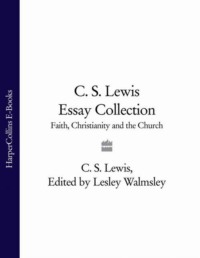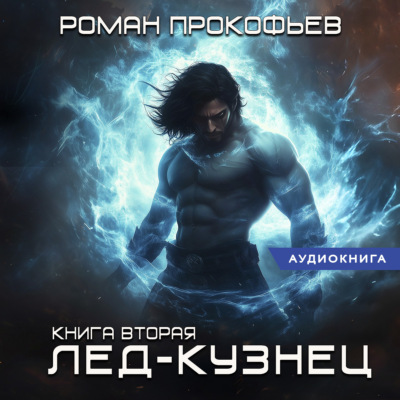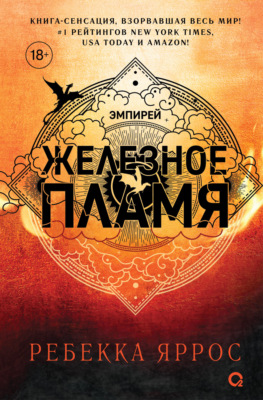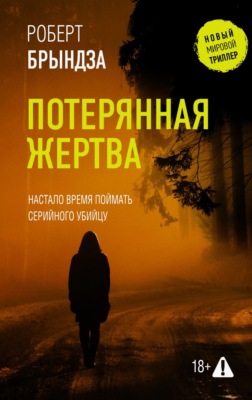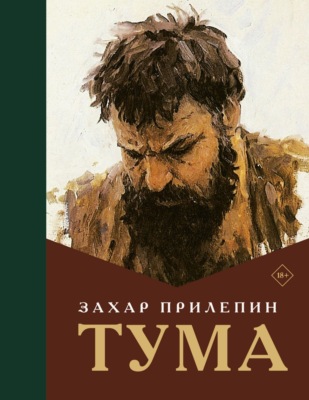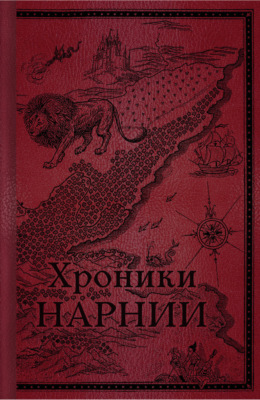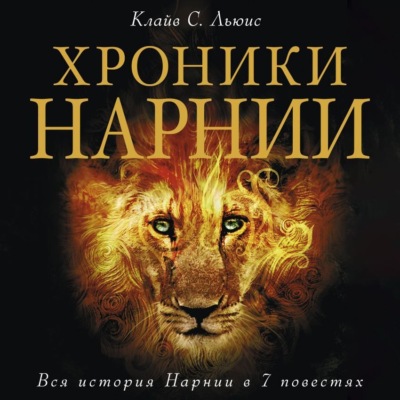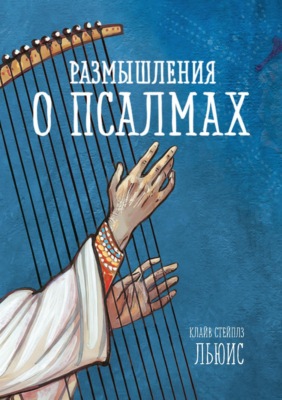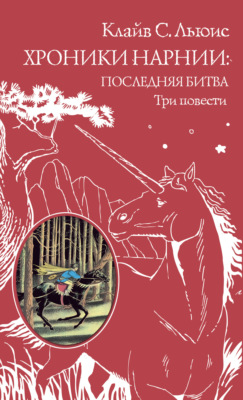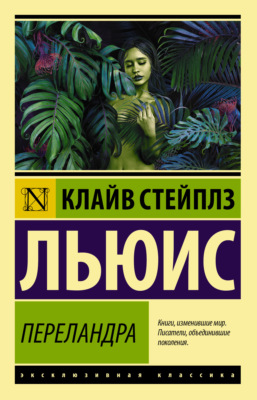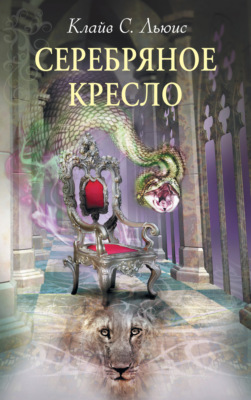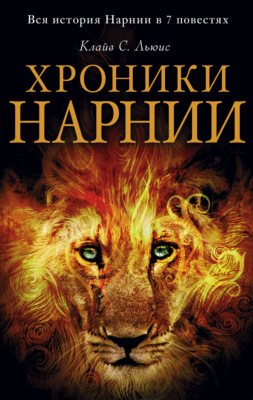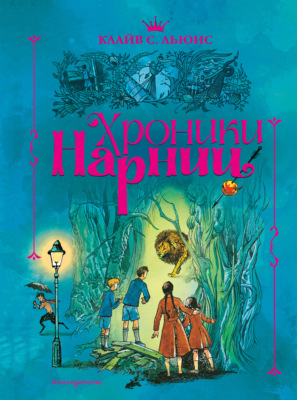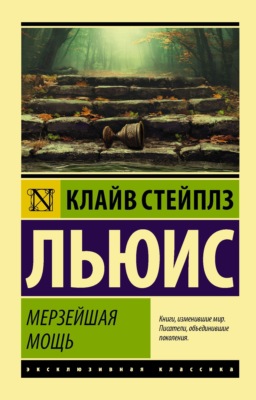Loe raamatut: «C. S. Lewis Essay Collection: Faith, Christianity and the Church»
C.S. Lewis
Essay Collection
Faith, Christianity and the Church
Edited By
Lesley Walmsley

Table of Contents
Cover Page
Title Page
INTRODUCTION
BOOKS MENTIONED IN THIS VOLUME
[PART 1] THE SEARCH FOR GOD
[1] THE GRAND MIRACLE
[2] IS THEOLOGY POETRY?
[3] THE FUNERAL OF A GREAT MYTH
[4] GOD IN THE DOCK
[5] WHAT ARE WE TO MAKE OF JESUS CHRIST?
[6] THE WORLD’S LAST NIGHT
[7] IS THEISM IMPORTANT?
[8] THE SEEING EYE
[9] MUST OUR IMAGE OF GOD GO?
[PART 2] ASPECTS OF FAITH
[10] CHRISTIANITY AND CULTURE
[11] EVIL AND GOD
[12] THE WEIGHT OF GLORY
[13] MIRACLES
[14] DOGMA AND THE UNIVERSE
[15] ‘HORRID RED THINGS’
[16] RELIGION: REALITY OR SUBSTITUTE?
[17] MYTH BECAME FACT
[18] RELIGION AND SCIENCE
[19] CHRISTIAN APOLOGETICS
[20] WORK AND PRAYER
[21] RELIGION WITHOUT DOGMA?
[22] THE DECLINE OF RELIGION
[23] ON FORGIVENESS
[24] THE PAINS OF ANIMALS
[25] PETITIONARY PRAYER: A Problem Without an Answer
[26] ON OBSTINACY IN BELIEF
[27] WHAT CHRISTMAS MEANS TO ME
[28] THE PSALMS
[29] RELIGION AND ROCKETRY
[30] THE EFFICACY OF PRAYER
[31] FERN-SEED AND ELEPHANTS
[32] THE LANGUAGE OF RELIGION
[33] TRANSPOSITION
[PART 3] THE CHRISTIAN IN THE WORLD
[34] WHY I AM NOT A PACIFIST
[35] DANGERS OF NATIONAL REPENTANCE
[36] TWO WAYS WITH THE SELF
[37] MEDITATION ON THE THIRD COMMANDMENT
[38] ON ETHICS
[39] THREE KINDS OF MEN
[40] ANSWERS TO QUESTIONS ON CHRISTIANITY
[41] THE LAWS OF NATURE
[42] MEMBERSHIP
[43] THE SERMON AND THE LUNCH
[44] SCRAPS
[45] AFTER PRIGGERY – WHAT?
[46] MAN OR RABBIT?
[47] ‘THE TROUBLE WITH “X”…’
[48] ON LIVING IN AN ATOMIC AGE
[49] LILIES THAT FESTER
[50] GOOD WORK AND GOOD WORKS
[51] A SLIP OF THE TONGUE
[52] WE HAVE NO ‘RIGHT TO HAPPINESS’
[PART 4] THE CHURCH
[53] CHRISTIAN REUNION
[54] PRIESTESSES IN THE CHURCH?
[55] ON CHURCH MUSIC
[PART 5] LETTERS
[56] THE CONDITIONS FOR A JUST WAR
[57] THE CONFLICT IN ANGLICAN THEOLOGY
[58] MIRACLES
[59] MR C.S. LEWIS ON CHRISTIANITY
[60] A VILLAGE EXPERIENCE
[61] CORRESPONDENCE WITH AN ANGLICAN WHO DISLIKES HYMNS1
[62] THE CHURCH’S LITURGY, INVOCATION, AND INVOCATION OF SAINTS
[63] THE HOLY NAME
[64] MERE CHRISTIANS
[65] CANONISATION
[66] PITTENGER-LEWIS AND VERSION VERNACULAR
[67] CAPITAL PUNISHMENT AND DEATH PENALTY
INDEX OF ESSAYS
ACKNOWLEDGEMENTS
About the Author
Other Books By
Praise
Copyright
About the Publisher
INTRODUCTION
Clive Staples Lewis was born in Belfast in 1898 and became a renowned scholar of medieval English, in which he lectured, first at Oxford and then at Cambridge. He also wrote widely on that subject, but as an author is now best known for his religious writings, including such books as Mere Christianity, The Screwtape Letters and The Chronicles of Narnia.
He was also a prolific writer of essays on many subjects to do with faith and life, and although they have been published in various collections over the years, this present volume is the first time that they have all been brought together. To make for ease of reading I have tried to put them into logical sections, but in some cases an essay could happily fall into at least two, such was Lewis’s breadth of approach, and within each section the essays are generally listed chronologically. There is a short introductory history for each one, including details of the latest collection in which it has been published, and at the front of the book there is a list of titles, with publication dates, of all the books mentioned as sources.
For all this background information, as for so much else to do with the works of C.S. Lewis, I am greatly indebted to Walter Hooper, whose C.S. Lewis–A Companion and Guide gives full details of all Lewis’s writings, including of course his essays. I have also largely kept the helpful footnotes which he added for those reading the essays many years after they were written. One small addition should be a note about The Guardian, which was a religious magazine rather than the national newspaper now known by that name.
Lewis was writing over a long period, from the 1920s to shortly before his death in 1963, and the world has changed a great deal since then. For many people there is no firm religious background to life, and new mass communications have brought influences from all kinds of ideologies into our very homes, all presented with lavish and impressive marketing techniques, some of which we don’t even realize may be changing the way we think. When Lewis made the broadcasts which were to form Mere Christianity Britain was at war, and his words came as a firm foundation to people who were looking for a faith to steady their lives. In reading them again I was struck by how directly they still speak to us at the turn of the century, despite having been written in that very different world of some fifty years ago.
Lesley Walmsley
BOOKS MENTIONED IN THIS VOLUME
Lewis’s adult religious books were first published by Geoffrey Bles, but in 1953 Bles was bought by William Collins, and his books then appeared under the imprints of William Collins Sons & Co (hardbacks) or Fontana (paperbacks), until in 1977 the religious paperbacks launched their own imprint of Fount. Collins later joined with the American publisher Harper & Row, and is now HarperCollinsPublishers. Unless otherwise stated, the books listed below were all published by Bles/ William Collins/HarperCollins/Fount. The dates shown represent the first and latest editions.
Complete publication details of all Lewis’s writings, up to 1996, can be found in C.S. Lewis–A Companion and Guide by Walter Hooper, published by HarperCollinsPublishers, London and San Francisco.
The Abolition of Man or, Reflections on Education with Special Reference to the Teaching of English in the Upper Forms of School, Bles 1946, Fount 1978 US: Macmillan 1947, Macmillan Paperback 1965
Christian Reflections, Bles 1967, Fount 1981, 1998 US: Eerdmans 1967
Christian Reunion, Fount 1990
Compelling Reason, Fount 1996, 1998 (formerly Undeceptions and First and Second Things–see below)
The Dark Tower and Other Stories, Collins 1977, Fount 1983, 1998 US: Harcourt Brace Jovanovich, Harvest/HBJ paperback 1977
Fern-seed and Elephants and Other Essays, Fontana 1975, Fount 1977, 1998
First and Second Things: Essays on Theology and Ethics, Fontana 1971, Fount 1985
God in the Dock–Essays on Theology and Ethics, (US) Eerdmans hardback 1970 UK: Undeceptions–(see below)
God in the Dock–Essays on Theology, Fontana 1979, Fount 1979, 1998 (This sedition is much shorter than the American one)
Of Other Worlds– Essays and Stories, Bles 1966 US: Harcourt, Brace & World 1967, Harvest Book paperback 1975
Of This and Other Worlds, Collins 1982, Fount 2000 (The contents are not exactly the same as those of Of Other Worlds)
Present Concerns, Fount 1986, 1991 US: Harcourt, Brace, Jovanovich, Harvest/HBJ paperback 1987
Rehabilitations and Other Essays, Oxford University Press 1939
Selected Literary Essays, Cambridge University Press 1969
The Screwtape Letters and Screwtape Proposes a Toast, Bles 1961 US: Macmillan 1962; revised Macmillan Paperback 1982
Screwtape Proposes a Toast and Other Pieces, Fontana 1965, Fount 1977, 1998
Surprised by Joy–The Shape of My Early Life, Bles 1955, Fontana 1959, Fount 1977
They Asked for a Paper–Papers and Addresses, Bles 1962
Timeless at Heart–Essays on Theology, Fount 1987, 1991
Transposition and Other Addresses, Bles, 1949
US: The Weight of Glory and Other Addresses, Macmillan 1949 (see also The Weight of Glory below)
Undeceptions–Essays on Theology and Ethics UK edition of (US) God in the Dock (1970), Bles 1971
The Weight of Glory and Other Addresses (revised and expanded edition) US: Macmillan Paperbacks 1980
The World’s Last Night and Other Essays (US) Harcourt, Brace & World 1960
[PART 1] THE SEARCH FOR GOD
[1] THE GRAND MIRACLE
This was preached in St Jude on the Hill Church, London, and later published in The Guardian (27 April 1945). It was reproduced in Undeceptions (1971) and God in the Dock (1998).
One is very often asked at present whether we could not have a Christianity stripped, or, as people who ask it say, ‘freed’ from its miraculous elements, a Christianity with the miraculous elements suppressed. Now, it seems to me that precisely the one religion in the world, or, at least, the only one I know, with which you could not do that is Christianity. In a religion like Buddhism, if you took away the miracles attributed to Gautama Buddha in some very late sources, there would be no loss; in fact, the religion would get on very much better without them because in that case the miracles largely contradict the teaching. Or even in the case of a religion like Mohammedanism, nothing essential would be altered if you took away the miracles. You could have a great prophet preaching his dogmas without bringing in any miracles; they are only in the nature of a digression, or illuminated capitals. But you cannot possibly do that with Christianity, because the Christian story is precisely the story of one grand miracle, the Christian assertion being that what is beyond all space and time, what is uncreated, eternal, came into nature, into human nature, descended into His own universe, and rose again, bringing nature up with Him. It is precisely one great miracle. If you take that away there is nothing specifically Christian left. There may be many admirable human things which Christianity shares with all other systems in the world, but there would be nothing specifically Christian. Conversely, once you have accepted that, then you will see that all other well-established Christian miracles–because, of course, there are ill-established Christian miracles; there are Christian legends just as much as there are heathen legends, or modern journalistic legends–you will see that all the well-established Christian miracles are part of it, that they all either prepare for, or exhibit, or result from the Incarnation. Just as every natural event exhibits the total character of the natural universe at a particular point and space of time; so every miracle exhibits the character of the Incarnation.
Now, if one asks whether that central grand miracle in Christianity is itself probable or improbable, of course, quite clearly you cannot be applying Hume’s1 kind of probability. You cannot mean a probability based on statistics according to which the more often a thing has happened, the more likely it is to happen again (the more often you get indigestion from eating a certain food, the more probable it is, if you eat it again, that you will again have indigestion). Certainly the Incarnation cannot be probable in that sense. It is of its very nature to have happened only once. But then it is of the very nature of the history of this world to have happened only once; and if the Incarnation happened at all, it is the central chapter of that history. It is improbable in the same way in which the whole of nature is improbable, because it is only there once, and will happen only once. So one must apply to it a quite different kind of standard.
I think we are rather in this position. Supposing you had before you a manuscript of some great work, either a symphony or a novel. There then comes to you a person, saying, ‘Here is a new bit of the manuscript that I found; it is the central passage of that symphony, or the central chapter of that novel. The text is incomplete without it. I have got the missing passage which is really the centre of the whole work.’ The only thing you could do would be to put this new piece of the manuscript in that central position, and then see how it reacted on the whole of the rest of the work. If it constantly brought out new meanings for the whole of the rest of the work, if it made you notice things in the rest of the work which you had not noticed before, then I think you would decide that it was authentic. On the other hand, if it failed to do that, then, however attractive it was in itself, you would reject it.
Now, what is the missing chapter in this case, the chapter which Christians are offering? The story of the Incarnation is the story of a descent and resurrection. When I say ‘resurrection’ here, I am not referring simply to the first few hours, or the first few weeks of the Resurrection. I am talking of this whole, huge pattern of descent, down, down, and then up again. What we ordinarily call the Resurrection being just, so to speak, the point at which it turns. Think what that descent is. The coming down, not only into humanity, but into those nine months which precede human birth, in which they tell us we all recapitulate strange pre-human, sub-human forms of life, and going lower still into being a corpse, a thing which, if this ascending movement had not begun, would presently have passed out of the organic altogether, and have gone back into the inorganic, as all corpses do. One has a picture of someone going right down and dredging the sea-bottom. One has a picture of a strong man trying to lift a very big, complicated burden. He stoops down and gets himself right under it so that he himself disappears; and then he straightens his back and moves off with the whole thing swaying on his shoulders. Or else one has the picture of a diver, stripping off garment after garment, making himself naked, then flashing for a moment in the air, and then down through the green, and warm, and sunlit water into the pitch black, cold, freezing water, down into the mud and slime, then up again, his lungs almost bursting, back again to the green and warm and sunlit water, and then at last out into the sunshine, holding in his hand the dripping thing he went down to get. This thing is human nature; but, associated with it, all nature, the new universe. That indeed is a point I cannot go into tonight, because it would take a whole sermon–this connection between human nature and nature in general. It sounds startling, but I believe it can be fully justified.
Now, as soon as you have thought of this, this pattern of the huge dive down to the bottom, into the depths of the universe and coming up again into the light, everyone will see at once how that is imitated and echoed by the principles of the natural world; the descent of the seed into the soil, and its rising again in the plants. There are also all sorts of things in our own spiritual life where a thing has to be killed, and broken, in order that it may then become bright, and strong, and splendid. The analogy is obvious. In that sense the doctrine fits in very well, so well in fact that immediately there comes the suspicion. Is it not fitting in a great deal too well? In other words, does not the Christian story show this pattern of descent and re-ascent because that is part of all the nature religions of the world? We have read about it in The Golden Bough.2 We all know about Adonis, and the stories of the rest of those rather tedious people; is not this one more instance of the same thing, ‘the dying God’? Well, yes it is. That is what makes the question subtle. What the anthropological critic of Christianity is always saying is perfectly true. Christ is a figure of that sort. And here comes a very curious thing. When I first, after childhood, read the Gospels, I was full of that stuff about the dying God, The Golden Bough, and so on. It was to me then a very poetic, and mysterious, and quickening idea; and when I turned to the Gospels never will I forget my disappointment and repulsion at finding hardly anything about it at all. The metaphor of the seed dropping into the ground in this connection occurs (I think) twice in the New Testament (John 12:24; 1 Corinthians 15:36), and for the rest hardly any notice is taken; it seemed to me extraordinary. You had a dying God, Who was always representative of the corn: you see Him holding the corn, that is, bread, in His hand, and saying, ‘This is My Body’ (Matthew 26:26; Mark 14:22; Luke 22:19; 1 Corinthians 11:24), and from my point of view, as I then was, He did not seem to realise what He was saying. Surely there, if anywhere, this connection between the Christian story and the corn must have come out; the whole context is crying out for it. But everything goes on as if the principal actor and still more those about Him, were totally ignorant of what they were doing. It is as if you got very good evidence concerning the sea-serpent, but the men who brought this good evidence seemed never to have heard of sea-serpents. Or to put it in another way, why was it that the only case of the ‘dying God’ which might conceivably have been historical occurred among a people (and the only people in the whole Mediterranean world) who had not got any trace of this nature religion, and indeed seem to know nothing about it? Why is it among them the thing suddenly appears to happen?
Tasuta katkend on lõppenud.
